Employee Journey Mapping: How to Make Each Experience Count
Written by María Eugenia Raffaele
Employee Journey Mapping is a key strategy you should leverage if you want to retain your talent. But, when does the journey begin? And how can you ensure people enjoy the ride from the moment they are recruited, and throughout their career in your company?
In case you didn’t know, employee journey mapping means creating your route to success. Plotting out the end to end experience of your employees can make a great difference in their personal and professional life, as you will be creating happier, more supported, and productive teams.
From my very first interview at Globant I remember I could tell nothing was left to chance. My recruiting process, onboarding experience, and every professional growth opportunity I’ve been given along my employee journey, have been the result of an organizational culture that cares about their people and maps out every key experience at the company.
I bet you’re thinking an employee journey is too broad in scope and ever-changing to be planned completely. And you are right! However, if you simply combine a growth-mindset culture with an effective employee journey mapping, you’ll optimize the key touchpoints your people come in contact with, and your employee experience will have a knock-on effect throughout your company.
So, how to make your employee journey map rock? Find out in this catch-all article.
New Scenario, New Needs
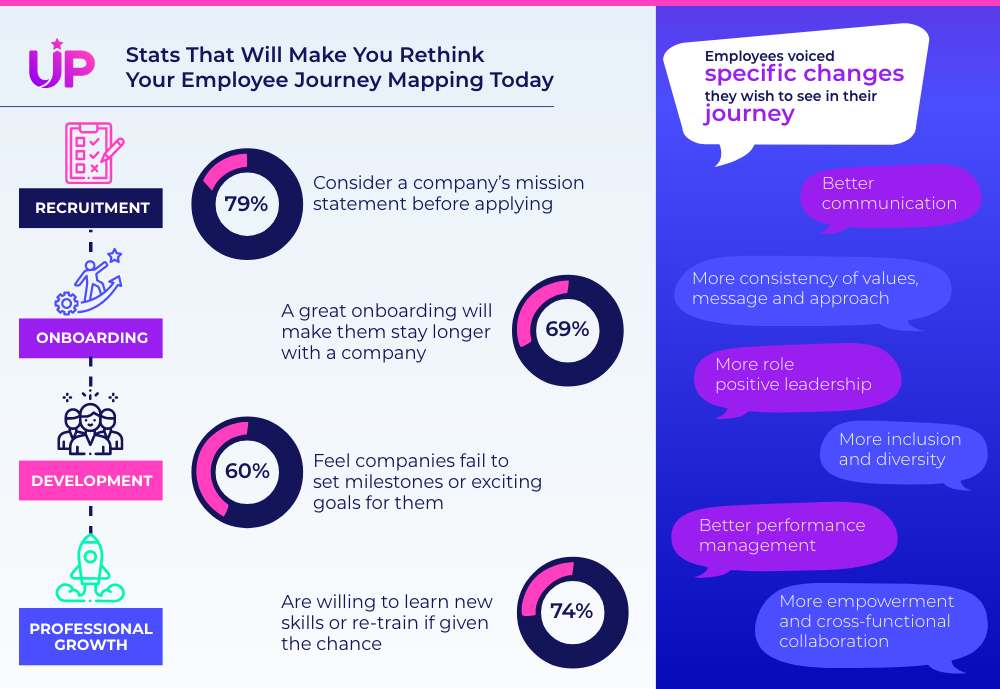
These stats on recruitment, onboarding, development, and professional growth say a lot about people’s perception of their experience and needs today.
Remote work has thrown a wrench into many HR-led initiatives focused on improving the employee experience, as most of them were contained within the company walls.
Now, with new future work trends, HR teams need to rethink their approach to their people’s experience and leverage employee journey mapping to depict all the key journey touchpoints while underscoring needs and opportunities on time.
The truth is that without gaining a deeper, holistic understanding of an employee experience, organizations are likely to face attrition and turnover soon after your new hires’ onboarding.
Key Concepts you Need to Know
First off, let’s be clear about 3 key concepts we’ll develop along the article.
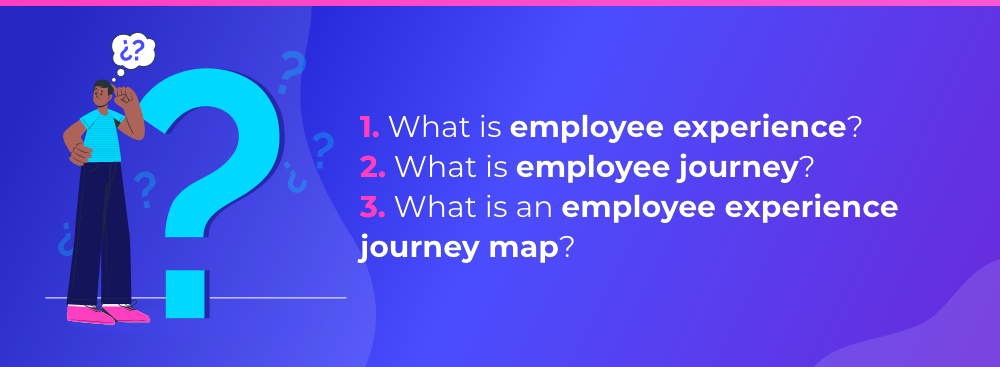
Let’s start with employee experience, shall we? Employee experience is a rather broad and nebulous term that’s hard to pin down. But, I’ll make it simple: It’s everything that your people see, feel, hear or do over the course of their life at your organization.
Now, What is the employee journey? By employee journey, however, we refer to a process of going somewhere – this entails specifying a starting point, going through different stages, and arriving at a destination. In a nutshell, an employee journey is a series of experiences that make up your people’s story at your company.
And last but not least, what is an employee experience journey map? At its simplest, like any roadmap you draw of your memorable vacation, this is a graphical image that represents people’s path in your organization. Here, you include the key experiences that matter for each particular type of individual.
How to Make it Work
It’s crystal clear that employee journey mapping is crucial to keep your people engaged and retain your talent. Why? Because when people see you have mapped out their key touchpoints with your company, they notice you truly care about their professional career and experience, and that’s the best strategy to bring out the best of them everyday.
But, the new context and new needs emerging in the world of work do raise a new challenge:

There are many employee journey mapping templates out there and its key elements will vary depending on each organization’s cultural approach to employee experience. For example, you’ll find templates like these:
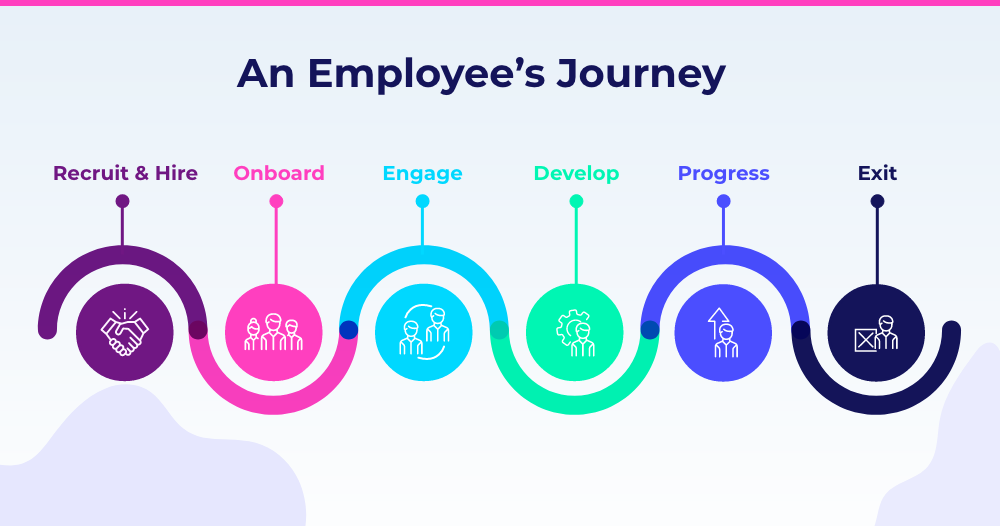
Which makes me wonder, is engagement a stage that takes place just once in the life of a person? Shouldn’t it be an ongoing process present along an employee journey mapping?
So, we’ll take you a step further here. When you build your employee journey mapping template, you should consider 3 key ingredients:
1. Main touchpoints
In this employee experience journey map we’ve identified 4 touchpoints or stages that make up crucial steps in the employee lifecycle in your company:
- Recruitment: In today’s scenario, you should consider a virtual recruiting process where you put candidates at the center all along so that the experience is enjoyable and more productive.
- Onboarding: Make it a human experience, other than a mere series of mechanical steps designed to integrate new talent into our organization.
- Development: Encourage ongoing development. Set KPIs and OKRs together. Keep track of their progress and make people part of the goal alignment process.
- Career growth: Find out cultural influencers, potential initiatives, and leaders to turn them into career growth opportunities for your employees.
2. How to approach each stage
Considering our data and insights on people’s needs and expectations at work, we’ve pointed out some of our top tips to make the employee journey truly meaningful and engaging. Here’s when your organizational culture plays the main role!
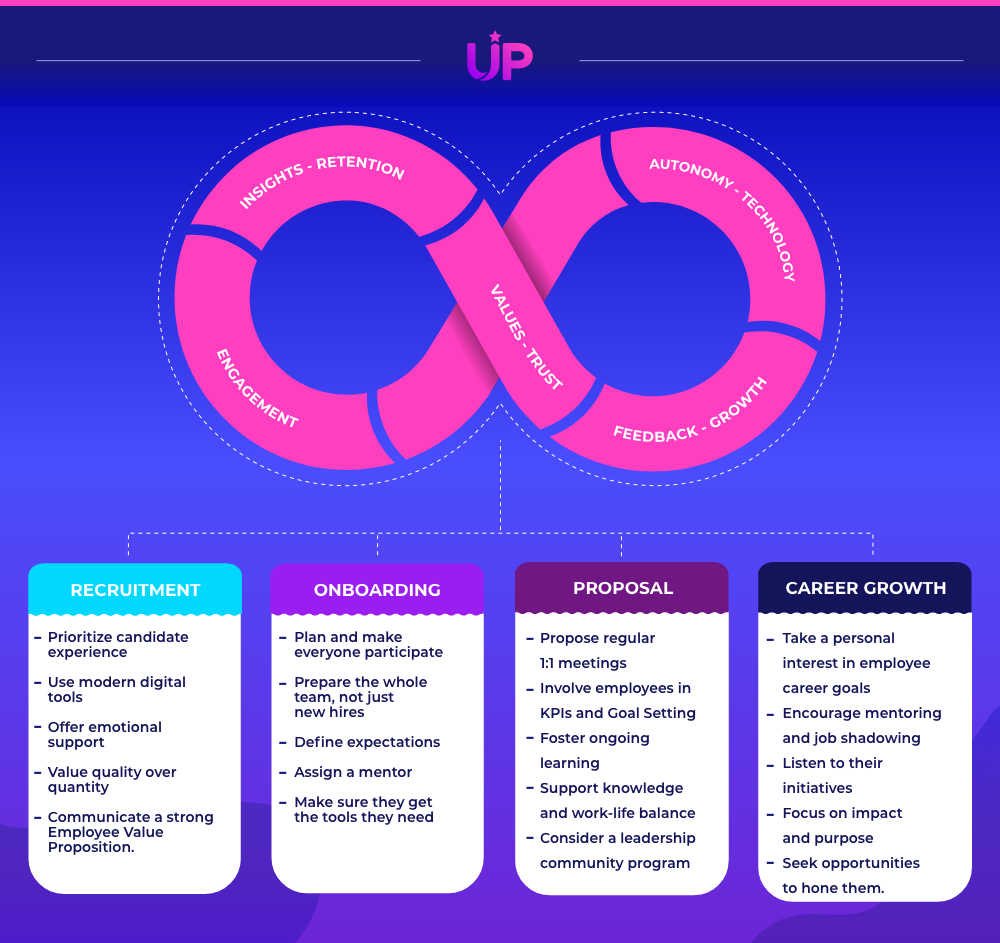
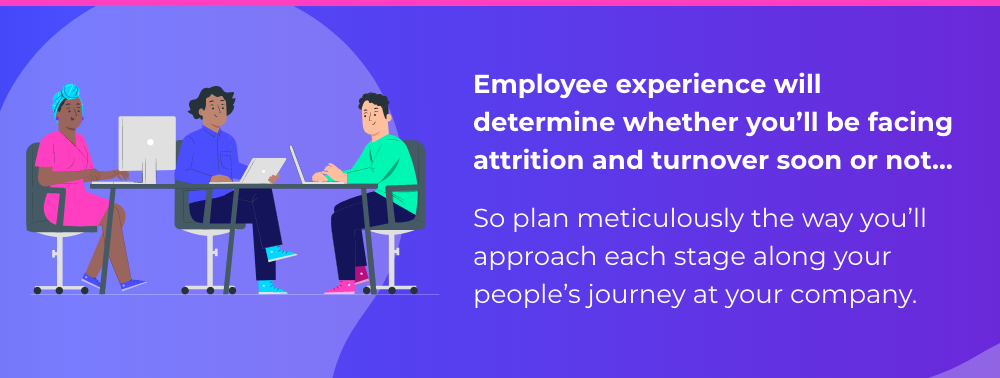
3. The infinite loop of touchpoints
These are the actions and elements that we consider pillars of any culture, and thus, should be part of every stage and every experience along your employee journey mapping. From the moment your people start working at your company and throughout their professional growth, make sure they are part of a flexible digital culture that:
- makes use of the right technology,
- uses insights to get to know every employee deeply,
- promotes feedback from multiple directions to leverage performance,
- makes values part of people’s DNA,
- builds trust, and
- empowers people, making them feel engaged everyday.
Culture and Technology
In today’s context, organizations need to find the way to integrate and optimize their employees’ interaction and experience within 2 main environments:
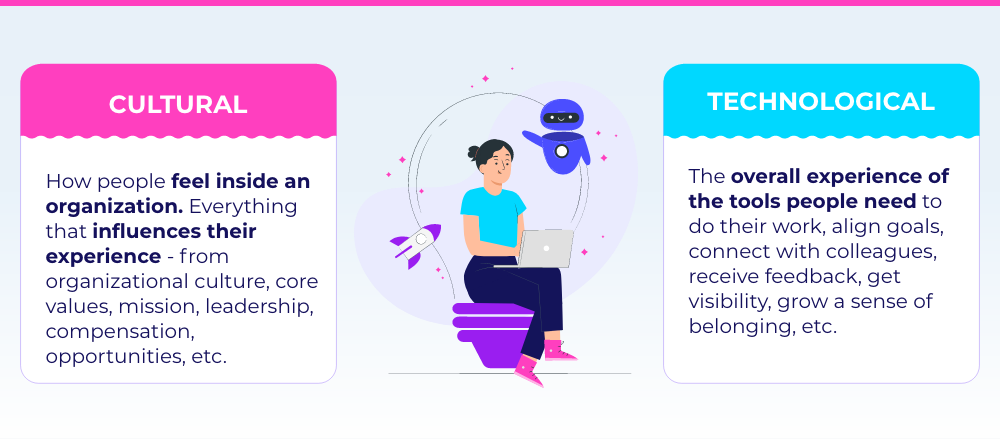
In times of flexible and remote work, with teams located around the world, organizations need to build digital cultures and embrace digital solutions to achieve high-performance while keeping employees engaged, aligned, and emotionally connected to one another everyday.
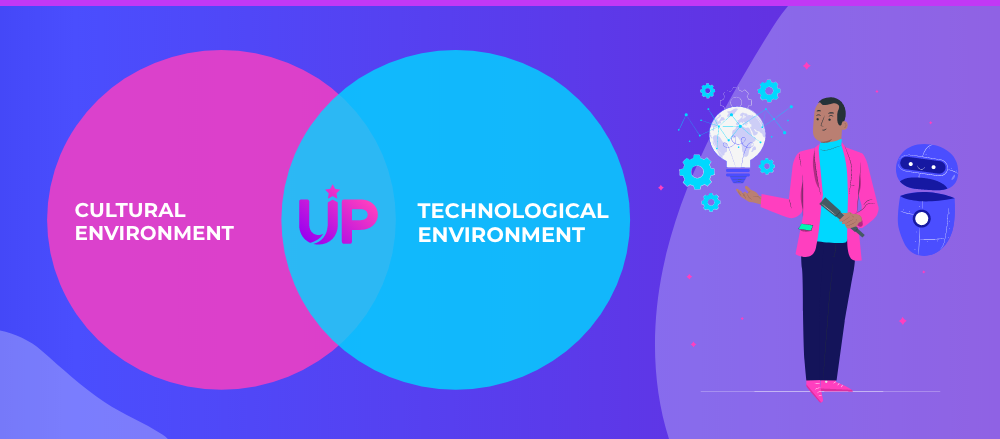
What About Your Employee Journey Mapping?
To conclude, I’d like to say that no matter how many key touchpoints or stages you draw in your employee journey map, just make sure you truly care about what the experience along the journey is going to be like.
Remember that every stage is crucial and engagement is fully achieved when day-to-day experiences count. People’s motivation is severely tarnished when they find out there is no plan for their life at your company, and that’s when they start looking for another job.